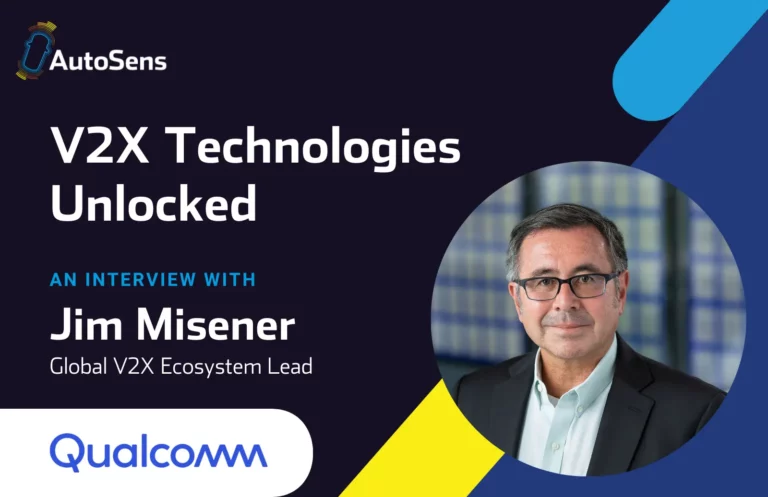In Grenoble, France, one company is aiming to make an impact in the field which is so visibly dominated by multi-billion dollar corporations. We caught up with the company’s Business Unit Director responsible for introducing their products to the Automotive market, Stéphane Cordova, to find out more, ahead of their attendance at AutoSens Detroit in May.
The company’s approach to “Supercomputing on a chip” has evolved from a the business origins providing components and software services to data centres, where high speed and reliability as well as low power consumption and significantly reduced heat generation were all key factors in processor component design.

What helped you decide to commit to exhibiting at AutoSens again?
Kalray’s technology will be at the heart of autonomous driving. AutoSens 2016 was a great opportunity to introduce European audiences to our MPPA processors. The event was intimate, so we had the chance to meet a diverse set of potential and current customers and partners.
We are looking forward to the AutoSens Detroit to be in touch with a more American audience.
Processing capacity is a big topic in autonomous cars – why?
Autonomous vehicles will be equipped with 3x as much electronics as current cars. Currently, electronics are managed in ECUs, but these controllers are overflowing with today’s electronics needs. Increasing ECUs in a car becomes very complex, and the multiplication of these parts increases the costs and the opportunity for malfunctioning.
Therefore vehicle manufacturers are looking for a totally new type of architecture that would be able to integrate the electronics needs for autonomous vehicles into a more streamlined, less complex system. Multiple architectures are being envisioned for autonomous vehicles. A centralized MPPA-based option is one architecture that has gained traction for its cost-effectiveness and simplification.
In the case of autonomous vehicles, high performance is not the only consideration, we also need to think about safety and predictability, which are both major challenges for autonomous cars. Even if you had the most powerful computer at the heart of your vehicle, it won’t matter if you can’t guarantee the behaviour of your application. The ultimate cost would be an accident.
How is Kalray’s approach different?
Some options are proposing processors that exist at the sensor-level. Some others are proposing an evolved ECU system. Another option would be a GPU-based system. Kalray’s MPPA is a different solution. We propose high performance processing with the capability of merging applications running in parallel onto a single, safe and determinist processor. This means that Kalray MPPA processors are only time predictable manycore able to guarantee the timing execution of an application.
Furthermore, on our architecture, you can run highly critical applications and/or high performance applications in parallel Our processor is quite different than other processors on the market – we make our own cores. So, the chip has been built, from beginning to end, with the idea of supporting parallel processes and time predictability. What does this mean concretely? Well, we can do deep learning on one part of the chip while processing sensor input on another part of the chip. If one part of the chip crashes, it will not affect the other applications running on the chip. This allows us to be “certifiable”. It also means we can do mixed-criticality processing.
This parallel structure is completely unique compared with the other solutions being proposed today. We are convinced that it will be the most advantageous processor for the need of the automotive industry.
Apart from C and C++ processing as standard, you also look at deep learning – why is that important?
Deep Learning is probably the most intensive, disruptive and, quite frankly, scary applications that autonomous vehicles must run. “Deep learning” refers to the ability of a computer / computerized object to make decisions autonomously.
If car makers wish to make self-driving cars, deep learning is the most promising way to reach that target. Therefore, for a processing company like Kalray, deep learning is the application around which to base our benchmarking. Kalray developed a tool that allows our customers to develop and evaluate their neural networks very quickly – it is kind of a gateway to get into our MPPA with deep learning without spending weeks of development.
The tool is called Kalray Neural Network (KaNN). But it turns out that our tool, KaNN, now rivals the high performances of deep learning processing that big-name companies, like NVidia, report on their systems.
When we talk about C and C++ or OpenCL, we are talking about the languages that our customers can use for programming the MPPA processor. The standardized libraries make it easier for our customers to program the MPPA according to their needs.
Everybody talks about system security – what approaches do Kalray’s systems support?
Our processor has been designed to respond to the needs of both the embedded sector as well as those of data centres. In the case of data centres, the processor needs to protect a network from the external world.
In future cars, which are always connected, we will need the same type of protection. It will be mandatory to protect the system responsible for the autonomy of the car from external network threats.
Our co-processors can encrypt and make all data crossing unreadable from the outside world.
You’ve published a series of great white papers, are any more planned?
This is a great question! Yes. White papers are a great way for Kalray to explain our technology. Being a new actor in the field, it is very important for us to spread the word about the advantages of our solutions. We are a pretty small team, and most us are technical people, so we have focused more on product development rather than communications – until recently. Now, however, we are looking to touch more people with our message.
What new products can we look forward to seeing from Kalray in the near future?
AutoSens will be the opportunity for us to unveil our plans for our third-generation chip. The third generation is geared towards the embedded sector – cost-optimized, smaller, higher performing, more energy efficient.
Our customers have been awaiting this announcement and we are excited to finally have this much-anticipated chip officially announced.

And let’s talk about you Stéphane – who do you admire and why?
Phew. This is a tough one. When we look at processors, we look for power and efficiency. I look for the same things in my role models. I have spent more than 20 years in the electronics industry throughout my career, and I would say that through my career it has been my colleagues who have been the greatest influences on me.
You’ve spent almost your whole working career in Grenoble – what’s so great about it?
This is a funny one! Yes, I have been based in Grenoble for quite a bit of my career, however my roles have brought me around the world. I travel often to the US, Japan and around Europe. I would say that I spend about 50% of my time in Grenoble and another 50% traveling to customers. Why Grenoble? Well, for an engineer working in microelectronics in France, there are not necessarily a million options. Grenoble is a great microelectronics and energy hub, with big research centres for CEA, STMicroelectronics, Scheneider Electric, Alstom, and others.
I have split my career between working for a big microelectronics corporation, and now with Kalray. Kalray is a start-up atmosphere – much smaller. So, the geographical place stays the same, but my day to day job has changed quite dramatically. I did also spent 2 years in Chicago, my 2nd lovely city! I miss Chicago a lot.
Lastly, what are you looking forward to most at AutoSens US or Europe?
AutoSens in 2016 was a starting point for Kalray to increase our visibility in Automotive field. Naturally we have jumped on that opportunity to continue this journey with you guys and looking for more contacts in US and more visibility in the autonomous vehicle field.
Watch our interview with Stéphane at AutoSens 2016:







